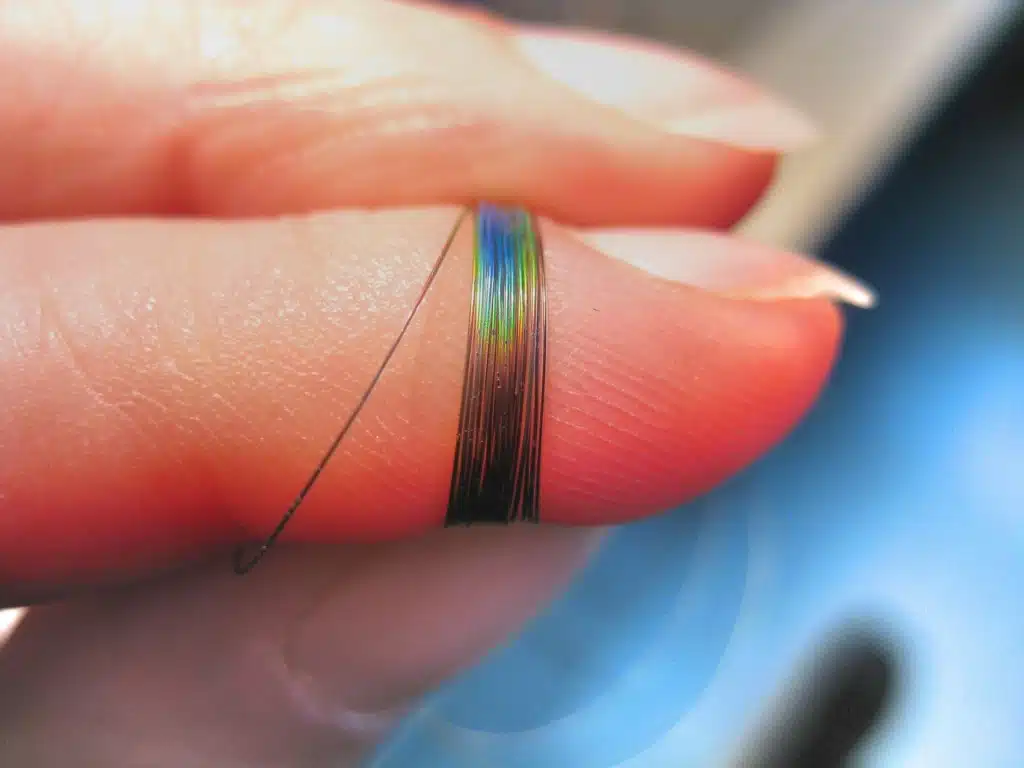Revolutionary laser micromachining technology installed in Melbourne
Lasers make micromachines: a human hair with 6 simultaneously-drilled rectangular holes, micropyramids only 6µm wide simulating a moths eye for telescope optics, a hair held in the clamps of an experimental razor and the plastic mould for a microturbine rotor only half a millimetre across.
All of these structures have been made using revolutionary new laser projection micromachining methods.
Swinburne University of Technology is bringing more than 3 Tonnes of laser equipment into Melbourne to spearhead its program to develop micromachines and make microtechnology available to Australian Industry. The equipment uses a pulsed excimer laser to fabricate microparts so precise that it can even drill 6 rectangular holes simultaneously through a human hair without any heat damage.
The laser system uses mask projection techniques to ablate complex 3D shapes into plastics, ceramics, glass and many other materials. Rather than using a focused spot to “draw” the pattern, a complete shape is printed onto a chrome-on-quartz mask, as is commonly used in the microelectronics industry, and this pattern is demagnified and projected onto a workpiece using the intense bursts of ultra-violet light from the high power excimer laser. In this way the complete mould for a microturbine only 0.5mm in diameter could be made. The mould is filled with electroplated nickel metal to produce the final turbine, which was designed with workers at Imperial College, London, to be part of a micro-cutter for eye surgery. A special feature of the cutter is that it is powered by a gentle flow of compressed air rather than other techniques using micromotors driven by large electrical voltages.
The excimer laser performs its task in another rather unique method called “Mask Dragging”. This method was developed by Australian Researcher Dr. Erol Harvey while he was working at Exitech Limited, a small company based just outside Oxford in the UK. In this method the image of a mask containing, for example, a row of small triangular openings is “dragged” across the workpiece while the lasers fires bursts of light. This creates a series of “V” groove lines sometimes called ribletts. If the workpiece is turned through 90deg and the machining repeated a surface covered with tiny, precise pyramids is created.
These pyramids act as anti-reflection structures that may find application on the Infra-red optics for huge astronomical telescopes. The structures mimic a moth’s eye that has evolved to prevent infra-red reflections that may be spotted by the moth’s predators. Such surfaces are sometimes called “stealth surfaces” when they prevent reflection of microwaves on military equipment, but if applied to swimming costumes they copy the behaviour of shark skin enabling Olympic swimmers to defy the tug of drag forces.
“At the micro level all things seems to be surfaces,” says Dr. Harvey. “Any tool which can control the properties of a surface will have huge impact not only on micromachines but also in macro-industrial products such as aircraft and ships. Many of the ideas for the use of this new technology will come from the natural world. Insects, plants and animals have a lot to teach us about how to use forces in the micro world.”
These laser micromachining techniques can be used to address a market which analysists (NEXUS Market survey, EU) have predicted to be worth around $40 Billion by the year 2001 if the ink-jet printer nozzle and computer hard disk read head are included, or between $10 – 14 Billion excluding these items.
Associate Professor Harvey has returned to Melbourne, bringing with him a state-of-the-art excimer laser micromachining system, one of only 6 in the world. The machine will be based at the Industrial Research Institute of Swinburne University and will be used for both industrial and scientific development projects. It is able to machine parts of up to 200 x 200mm in area with a resolution of 1?m (1 millionth of a metre, or 1 hundredth of a human hair) and an accuracy of 2?m over the full area of the part.
About IRIS
IRIS was established by the State and Federal Government, Swinburne University of Technology, and Pratt Industries. The Institute was founded on the great success of the Key Centre for Computer Integrated Manufacture, which was established by the Australian Research Council in 1985. IRIS is a research institute within Swinburne University, and is moving towards two decades of experience in industrial research, training, postgraduate education and technology transfer. The Institute is located in a well-equipped, purpose-designed building on the corner of Burwood Rd and Henry St, and is one of Australia’s largest, industry-oriented research and development centres.
The IRIS mission is to enhance the competitiveness of Australian industry through a range of services including collaborative research, technology diffusion programmes, postgraduate courses, and industry training programmes.
Illustrations available
| A human hair with 6 simultaneously-drilled rectangular holes | |
| Micropyramids only 6µm wide simulating a moths eye for telescope optics, | |
| A hair held in the clamps of an experimental razor | |
| The plastic mould for a microturbine rotor only half a millimetre acros |





 Fresh Science is on hold for 2022. We will be back in 2023.
Fresh Science is on hold for 2022. We will be back in 2023.